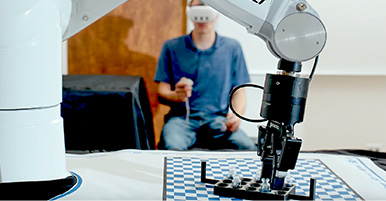Citation
Jason D. White, F. Ahu Akin, Harald Oser, and David R. Crosley, “Production of the NO photofragment in the desorption of RDX and HMX from surfaces,” Appl. Opt. 50, 74-81 (2011)
Abstract
A promising scheme for the remote detection of nitrate-based explosives, which have low vapor pressure, involves two lasers: the first to desorb, vaporize, and photofragment the explosive molecule and the second to create laser-induced fluorescence in the NO fragment. It is desirable to use for the first a powerful 532nm532nm frequency-doubled Nd:YAG laser. In this study, we investigate the degree of photofragmentation into NO resulting from the irradiation of the explosives RDX and HMX coated on a variety of surfaces. The desorption step is followed by femtosecond laser ionization and time-of-flight mass spectrometry to reveal the fragments produced in the first step. We find that modest laser power of 532nm532nm desorbs the explosive and produces adequate amounts of NO.


